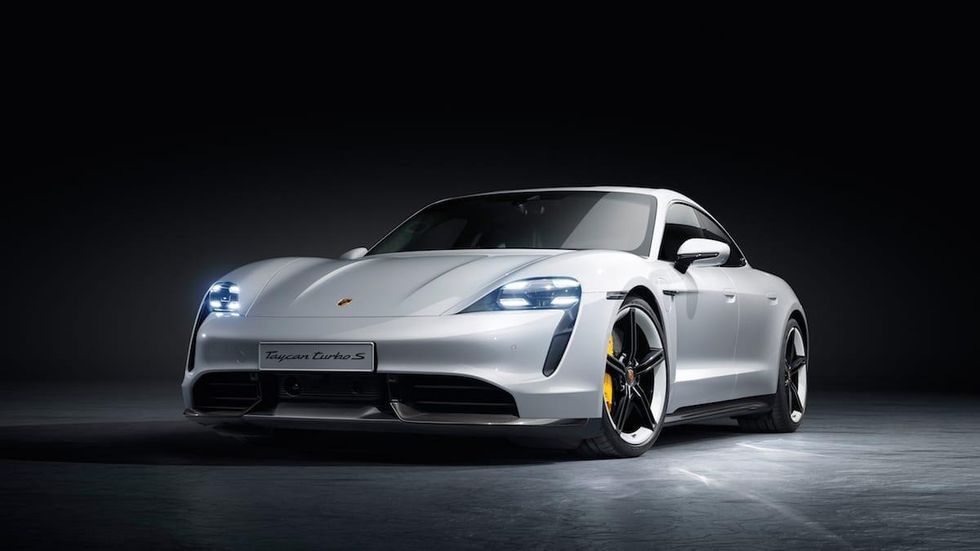Carmakers Pile into EVs: Porsche Unveils Electric-Powered Supercar

More carmakers are unveiling electric offerings, as Moody’s predicts demand for battery metals could increase dramatically thanks to electric vehicles.
German carmaker Porsche (OTC Pink:POAHF,ETR:PAH3) has finally released its all-electric offering, the Taycan.
The new model has been all the carmaker has been able to talk about since it made its public North American debut on September 4 at Niagara Falls last week, with a torrent of coverage from the company gushing about the electric cars specs.
The new model hits the roads as more and more luxury car makers are rushing to release electric variants of their existing range or creating all-new models like the Taycan outright.
The rush on development continues to drive demand for commodities associated with battery technology development, though those commodities are all moving in different directions depending on their own stories.
The ever-present cobalt has been enjoying a bump in value in the past month after major miner Glencore (LSE:GLEN) announced it would be closing the Mutanda copper-cobalt mine in the DRC because of low prices. Meanwhile, lithium has been headed downwards as supply outstrips demand.
Despite the turbulent trajectories of battery commodity prices, Moody’s said on Tuesday (September 10) that the coming electric car boom was set to keep producers busy going forward, with the credit ratings agency predicting demand for battery metals like cobalt, copper, nickel and lithium would increase sixfold if EV market share reaches just 8 percent by the mid-2020s.
According to data released by JATO, consumers have been taking more of a liking to electric vehicles in 2019, with sales of all battery-electric vehicles (BEVs), a category that includes hybrids, increasing by 92 percent in the first half of 2019 compared to the first half of 2018.
“This is a substantial increase considering the challenging situation facing the vehicle industry worldwide,” wrote JATO’s automotive analyst Felipe Munoz. “However, BEVs continue to face the same issues as the wider market: they’re quite expensive (even in China), the infrastructure’s not ready yet, and there are still concerns about battery ranges.
“This explains why they’re still a niche segment worldwide. Despite incentives in many markets, their global market share totaled 1.7 percent. Fewer than 2 in 100 vehicles sold globally were powered by a fully electric engine.”
Despite the low overall market share of vehicles on the road, electric vehicles are still making up ground. In the same period, electric vehicles accounted for 9 percent of vehicle sales — meaning the segment potentially has legs to catch up.
But, back to the super fancy supercar.

For Porsche, the Taycan represents its first all-electric offering in a market that’s been seeing more all-electric players pile in, such as the Jaguar I-Pace, the Audi (OTC Pink:AUDVF,ETR:NSU) E-Tron and, of course, everything Tesla (NASDAQ:TSLA) is offering.
Porsche is a part of the same empire as Audi in Volkswagen Group (OTC Pink:VLKAF,FWB:VOW), where all associated marques have been developing electric offerings and have a special interest in securing battery metal supplies. For its part, Porsche plans to have invested 6 billion euros in its electric mobility program by 2022.
For the fun bits, the fancier Taycan will be able to go from zero to 100 kilometers per hour (km/h) in 2.8 seconds, with a top speed of 260 km/h and a range of 412 km. The less fancy version will be slower off the mark at zero to 100 km/h in 3.2 seconds, but longer on the track with a range of 450 km.

The company has put a lot of engineering into the sedan. “The Taycan is the first production vehicle with a system voltage of 800 volts instead of the usual 400 volts for electric cars. This is a particular advantage for Taycan drivers on the road: in just over five minutes, the battery can be recharged using direct current (DC) from the high-power charging network for a range of up to 100 kilometres.
“The charging time for five to 80 percent SoC (state of charge) is 22.5 minutes for charging under ideal conditions, and the maximum charging power (peak) is 270 kW.”
More efforts to address charging concerns, infrastructure and technology is often brought up by proponents of electric vehicles as vital for the cars’ success in the long-term.
Don’t forget to follow us @INN_Resource for real-time updates.
Securities Disclosure: I, Scott Tibballs, hold no direct investment interest in any company mentioned in this article.


